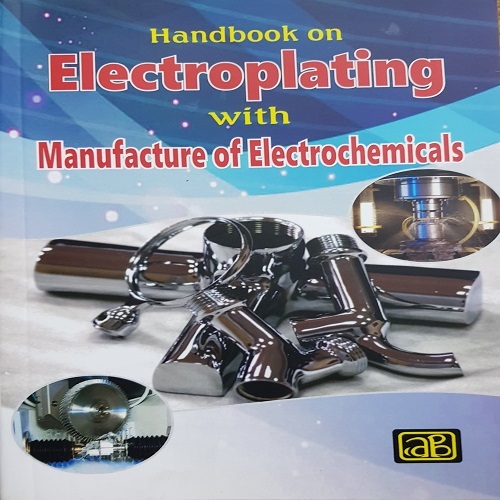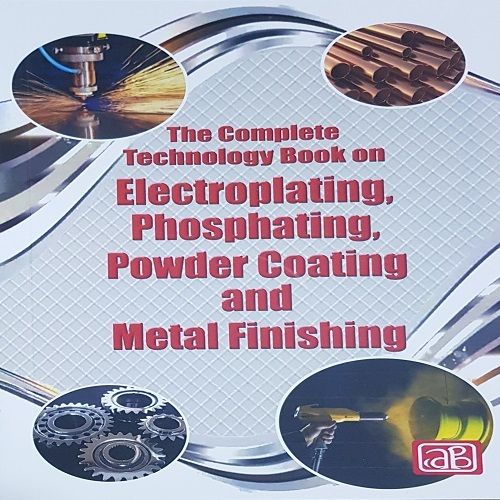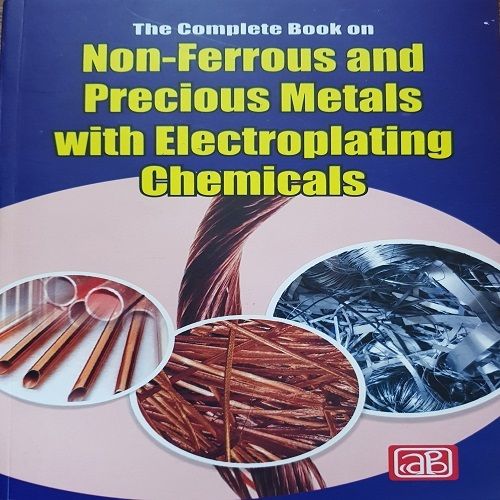Call us: 07317187866
Handbook on Electroplating with Manufacture of Electrochemicals

Handbook on Electroplating with Manufacture of Electrochemicals Price And Quantity
- 1695 INR/Piece
- 1695.00 - 1800.00 INR/Piece
- 1 Piece
Handbook on Electroplating with Manufacture of Electrochemicals Trade Information
- Cash on Delivery (COD) Cash Against Delivery (CAD) Cash in Advance (CID) Cash Advance (CA)
- 10 Piece Per Day
- Cardboard boxes are industrially prefabricated boxes, primarily used for packaging goods and materials and can also be recycled.
- All India
Product Description
Electroplating is an electro deposition process for producing a dense, uniform, and adherent coating, usually of metal or alloys, upon a surface by the act of electric current. The term is also used for electrical oxidation of anions onto a solid substrate, as in the formation silver chloride on silver wire to make silver/silver-chloride electrodes. Electroplating is primarily used to change the surface properties of an object (e.g. abrasion and wear resistance, corrosion protection, lubricity, aesthetic qualities, etc.), but may also be used to build up thickness on undersized parts or to form objects by electroforming.
Electrochemical deposition is generally used for the growth of metals and conducting metal oxides because of the following advantages: (i) the thickness and morphology of the nanostructure can be precisely controlled by adjusting the electrochemical parameters, (ii) relatively uniform and compact deposits can be synthesized in template-based structures, (iii) higher deposition rates are obtained, and (iv) the equipment is inexpensive due to the non-requirements of either a high vacuum or a high reaction temperature. An electrochemical process where metal ions are transferred from a solution and are deposited as a thin layer onto surface of a cathode.
In the recent years, developments in electronic and chemical engineering have extended the process of electroplating to a wide range of materials such as platinum, Alloy, Silver, Palladium, Rhodium, etc. The electroplating market is an application driven market, which depends largely on the net output of the manufacturing industry.
The electroplating technology allows electro-deposition of multiple layers as thin as one-millionth of a centimeter which makes it an indispensable part of the semiconductor industry. Rising demand for computing devices is expected to create significant market opportunities for electroplating service providers. Growing net output of manufacturing industry, rising demand for consumer goods which mandates more surface finishing services, growth of the electronics industry are some of the key factors driving the growth of the global electroplating market.
The book gives comprehensive coverage of Electroplating Uses, Application Manufacturing, Formulation and Photographs of Plant & Machinery with Supplier s Contact Details. The major contents of the book are Metal Surface Treatments, Electrolytic Machinery Methods, Electroless Plating, Electroplating Plant, Electroplating of Aluminium, Cadmium, Chromium, Cobalt, Copper, Gold, Iron, Lead, Nickel, Bright Nickel, Silver, Alloy, Platinum, Palladium, Rhodium, Bright Zinc, Tin and Plastics Barrel, Zinc Electroplating Brightener, Colouring of Metals, Metal Treatments, Electrode position of Precious Metals and Stainless Steel, Case Hardening, Electroless Coating of Gold, Silver, Manufacture of phosphorus.
It is a very useful book that covers all important topics of Electroplating. It will be also a standard reference book for professionals, entrepreneurs, those who are interested in this field can find the complete of Electroplating. It will be very helpful to consultants, new entrepreneurs, technocrats, research scholars, libraries and existing units.
 English
English Spanish
Spanish French
French German
German Italian
Italian Chinese (Simplified)
Chinese (Simplified) Japanese
Japanese Korean
Korean Arabic
Arabic Portuguese
Portuguese



